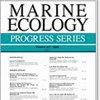The role of small pelagic fish in diverse ecosystems: knowledge gleaned from food-web models
IF 2.1
3区 环境科学与生态学
Q2 ECOLOGY
引用次数: 0
Abstract
ABSTRACT: Small pelagic fish (SPF) are important forage species and a target of major fisheries within diverse ecosystems. SPF are a critical link between plankton and higher trophic levels. Understanding the network of dependencies among species and fisheries supported by SPF is required for effective resource management and assessment of risks posed by environmental and anthropogenic stressors. Food-web models represent a synthesis of knowledge of these dependencies and are a platform for evaluating the consequences of change in SPF productivity. From Ecopath food-web models archived within EcoBase (www.ecobase.ecopath.org) and from peer-reviewed literature, we compiled physiological parameters, biomasses, diets, and fishery catch rates that define SPF characteristics. From 199 models, metrics characterizing demand on ecosystem production, contribution to predators and fisheries, and sensitivities to changes in SPF were calculated. Across all models, globally, SPF represented 43% of total fish production and were supported by 8% of total primary production (14% in open ocean and 10% in upwelling models). In turn, SPF represented 18% of total fish and invertebrate catch (53% in upwelling models). From a services perspective, considering all direct and indirect trophic pathways, SPF were major contributors to predators and fisheries. On average, SPF supported 22% of seabird production, 15% of mammal production, and 34% of total fisheries catch. Support to upper trophic levels was greater in upwelling models (33% of seabird, 41% of mammal, and 62% of fishery production). These analyses show the importance of accounting for direct and indirect support by SPF to predators and fisheries when making management decisions.小型中上层鱼类在多样化生态系统中的作用:从食物网模型中汲取的知识
摘要:小型中上层鱼类(SPF)是重要的饲料物种,也是各种生态系统中主要渔业的捕捞对象。小型中上层鱼类是浮游生物与更高营养级之间的关键纽带。要有效地管理资源并评估环境和人为压力因素带来的风险,就必须了解由 SPF 支持的物种和渔业之间的依赖关系网络。食物网模型是这些依赖关系知识的综合体,也是评估南太平洋渔业资源生产力变化后果的平台。我们从 EcoBase(www.ecobase.ecopath.org)中存档的 Ecopath 食物网模型和同行评议的文献中,汇编了定义 SPF 特征的生理参数、生物量、饮食和渔获率。通过 199 个模型,我们计算出了生态系统生产需求、对捕食者和渔业的贡献以及对 SPF 变化的敏感性等指标。在全球所有模式中,SPF 占鱼类总产量的 43%,并得到初级生产总量 8% 的支持(开阔海域为 14%,上升流模式为 10%)。反过来,SPF 占鱼类和无脊椎动物总捕获量的 18%(在上升流模式中占 53%)。从服务的角度来看,考虑到所有直接和间接的营养途径,SPF 是捕食者和渔业的主要贡献者。平均而言,SPF 支持了 22% 的海鸟生产、15% 的哺乳动物生产和 34% 的渔业总捕获量。在上升流模式中,对上层营养级的支持更大(海鸟产量的 33%、哺乳动物产量的 41%和渔业产量的 62%)。这些分析表明,在做出管理决策时,必须考虑到 SPF 对捕食者和渔业的直接和间接支持。
本文章由计算机程序翻译,如有差异,请以英文原文为准。
求助全文
约1分钟内获得全文
求助全文
来源期刊

Marine Ecology Progress Series
环境科学-海洋学
CiteScore
5.30
自引率
8.00%
发文量
238
审稿时长
3 months
期刊介绍:
The leading journal in its field, MEPS covers all aspects of marine ecology, fundamental and applied. Topics covered include microbiology, botany, zoology, ecosystem research, biological oceanography, ecological aspects of fisheries and aquaculture, pollution, environmental protection, conservation, and resource management.
 求助内容:
求助内容: 应助结果提醒方式:
应助结果提醒方式:


